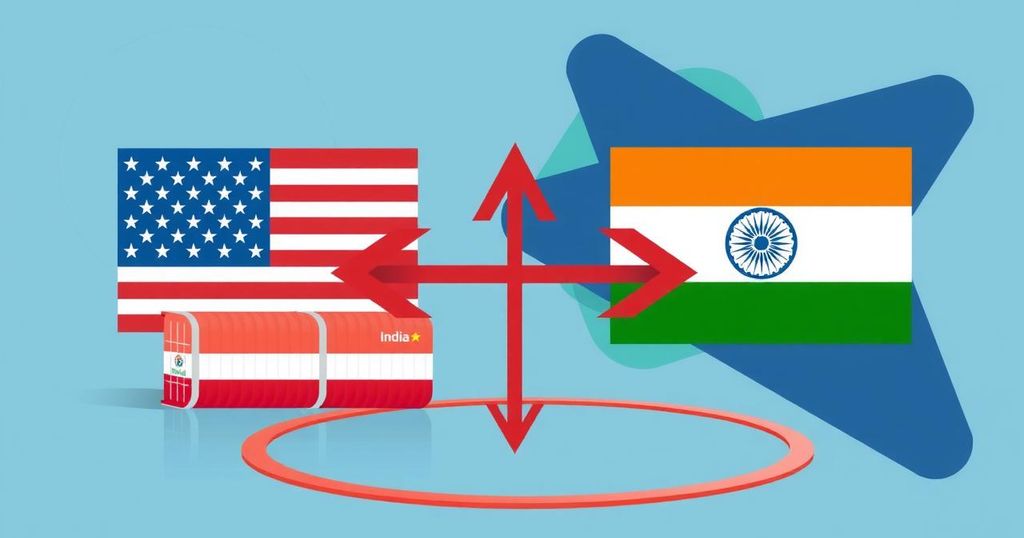India’s Reaction to US Reciprocal Tariffs: Trade Talks and Implications Ahead

US President Trump plans to introduce reciprocal tariffs on all countries starting April 2, focusing on addressing trade imbalances. India seeks to engage in sectoral discussions with the US to enhance bilateral trade, currently valued at USD 190 billion, with ambitions to reach USD 500 billion by 2030. The outcome of these tariff discussions is anticipated to significantly impact trade relations between the two nations.
US President Donald Trump plans to implement a strategy of reciprocal tariffs targeting all countries, contrary to reports suggesting a limited focus on only 10 to 15 nations. This approach is part of Trump’s broader initiative to address trade discrepancies and boost US manufacturing, utilizing tariff revenues to support domestic policy, including tax cuts and other campaign promises for the 2024 election.
Kevin Hassett, an economic advisor, indicated that the administration would principally focus on nations with substantial trade imbalances but did not disclose specific details. The White House has yet to clarify the tariffs’ specifics, criteria for exemptions, or countermeasures regarding non-tariff barriers. Concerns about economic repercussions and a potential trade war have led to increased market volatility.
India and the US are advancing discussions on a bilateral trade agreement (BTA) following recent negotiations, with talks aimed at enhancing cooperation in key sectors like market access and supply chain integration. The goal is to finalize the initial phase of this agreement by fall 2025, aspiring to double trade from an existing USD 190 billion to USD 500 billion by 2030.
The US is asking for concessions in various sectors, and India may reciprocate by seeking reductions in labor-intensive exports. Tariff discussions have the potential to significantly impact Indian industries, particularly as the US remains a primary trading partner. Additionally, with agricultural exports being politically sensitive, experts predict that sectors like dairy may be excluded from negotiations.
As of 2024, the trade dynamics show the US importing significant amounts from India, predominantly in pharmaceuticals and technology, while exporting agricultural products and machinery. The strong bilateral trade relationship has been evidenced by a trade surplus for India and substantial foreign direct investments from the US. Given this context, the upcoming tariff strategy will be closely monitored for its implications on international trade relations, particularly between India and the US.
In summary, the impending tariffs set to be introduced by the US on April 2 could lead to significant shifts in international trade dynamics, particularly with major trading partners like India. Both countries are currently engaged in negotiations to bolster their trade agreement, with aims to reduce barriers and enhance cooperation. The complexities surrounding tariff implementation, especially regarding sensitive sectors such as agriculture, are crucial factors to watch as the situation develops. An effective response from India will be vital to mitigating potential negative effects on their economy and industries.
Original Source: www.livemint.com







